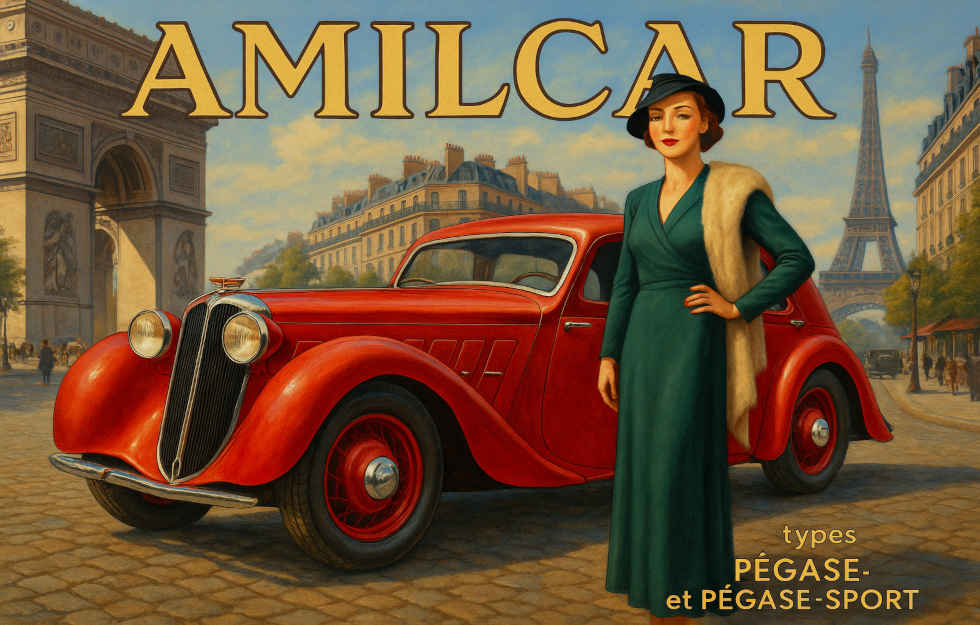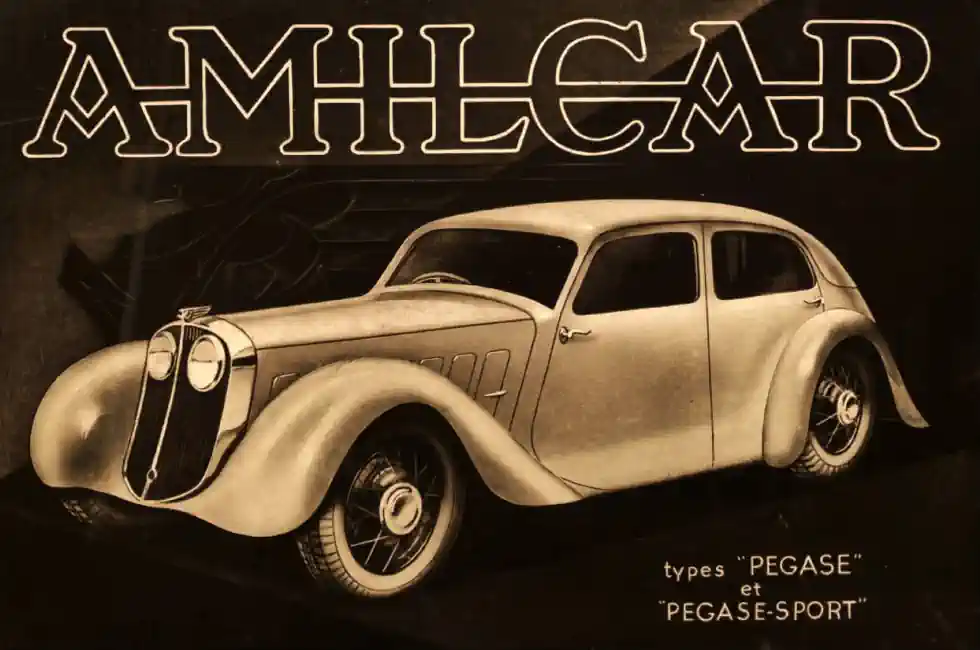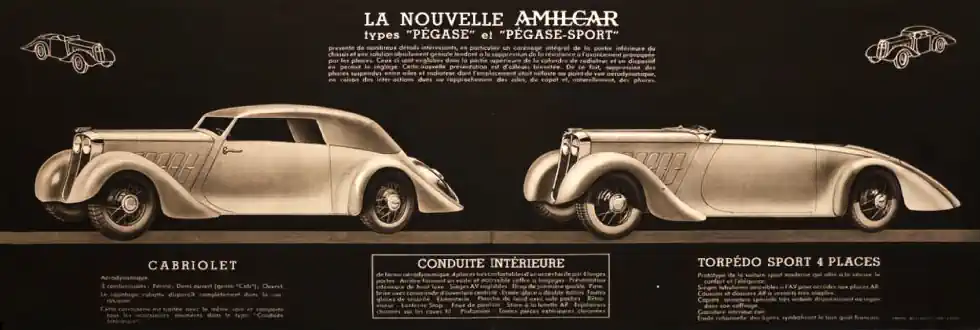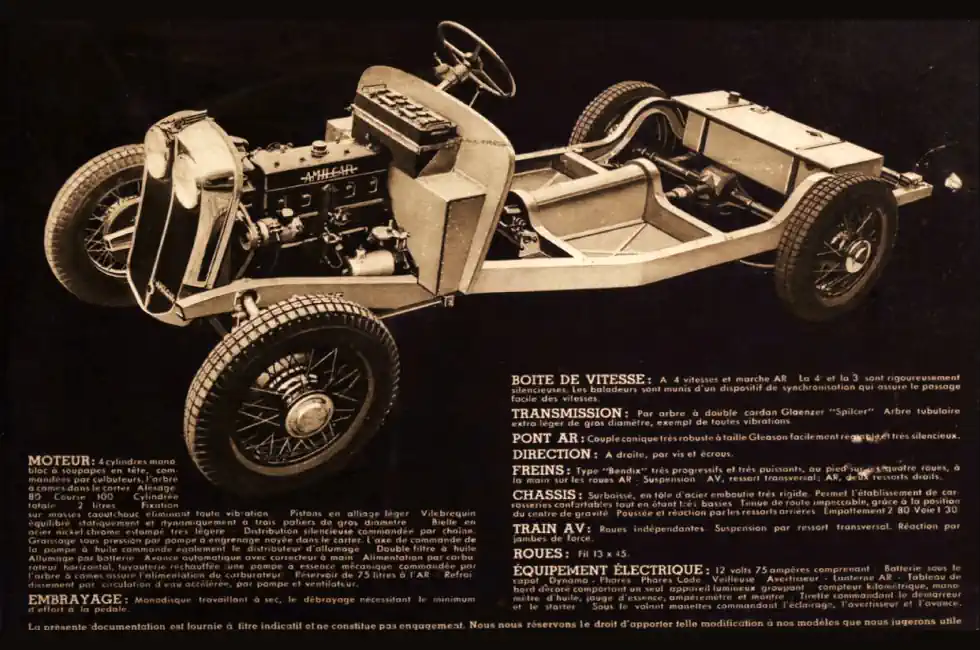Amilcar Pégase (1936) — Aerodynamic Dreams of the 1930s

Amilcar was a French automobile manufacturer that emerged in the early 1920s, earning admiration for its light, sporty cars that embodied the optimism of post–World War I France. Founded in Saint-Denis near Paris, the brand became synonymous with elegant engineering and agile performance, producing beloved models such as the CGS and the C6. By the mid-1930s, Amilcar’s ambitions had grown into the luxury segment with the Pégase—an aerodynamic grand tourer that reflected the influence of aviation and modern design. Sadly, the company’s promising trajectory came to an abrupt end during the Nazi occupation of France in World War II, and Amilcar never resumed production afterward. What remains is a legacy of artistry and innovation expressed through exquisite engineering.
The 1936 Amilcar Pégase catalogue stands as both a technical document and a piece of visual culture. It presents the brand’s shift from lightweight racers to sophisticated touring cars through elegant renderings, precise mechanical cutaways, and meticulous French typography. Brochures like this were once the lifeblood of motoring aspiration—distributed at salons, dealerships, and trade fairs to capture the imagination of potential buyers. Today, they serve as invaluable historical artifacts, preserving not only the machinery but also the aesthetic ideals of an era when cars were designed as much for beauty as for motion. In leafing through such pages, we glimpse a forgotten elegance—where the promise of progress was inked in sepia and steel.
1936 Brochure

The cover of the 1936 Amilcar Pégase brochure is a striking example of late Art Deco automotive design.
Dominated by the bold, geometric AMILCAR logotype, the composition presents the new Pégase model as both sculpture and speed.
The car's long bonnet, sweeping fenders, and aerodynamic contours suggest motion even at rest, embodying the era's fascination with streamlining and flight.
Rendered in warm sepia tones with smooth airbrushed shading, the illustration conveys refinement and modernity;
Qualities aimed at elevating Amilcar from its 1920s cyclecar roots into the realm of grand touring luxury.
The minimal text, types Pégase
et Pégase–Sport
, completes the composition with quiet confidence,
letting the elegance of the machine speak for itself.

THE NEW AMILCAR types “PÉGASE” and “PÉGASE-SPORT”
The Amilcar Pégase presents many interesting features, in particular a full fairing of the lower part of the chassis and an absolutely ingenious solution aimed at eliminating the air resistance caused by the headlights. These are now integrated into the upper section of the radiator grille, with a device allowing for their adjustment. This new design is moreover patented. As a result, the removal of the headlights previously suspended between the wings and the radiator improves aerodynamic efficiency by avoiding the interference caused by the proximity of the wings, the bonnet, and of course, the headlights.

The cutaway plate presents the Amilcar Pégase as a rolling chassis: radiator and grille leading to a long inline-four mounted up front, the steering column and wheel perched above a narrow scuttle, and a low, stamped-steel ladder frame stepping down between the axles. Wire wheels, drum brakes, and a compact gearbox are clearly visible, with the prop shaft running aft to a banjo-type rear axle. Battery, fuel tank bay, and tool stowage are shown within the rear platform, while the exhaust and control linkages trace neat, serviceable lines along the rails—an elegant blend of display and workshop diagram.
From a 1936 engineering standpoint, the specification is modern yet practical: a monobloc overhead-valve four with pressure lubrication feeds a 4-speed gearbox (synchromesh on the upper gears), then a tubular prop shaft to a robust rear bevel gear (Gleason type). The front uses independent wheels on a transverse spring for better road holding, while the rear remains a live axle on semi-elliptic springs for strength and ride. Bendix
mechanical brakes operate on all four drums through carefully balanced rods. The low seating position and dropped frame lower the centre of gravity for stability, and the electrical system (12 V dynamo, grouped instruments, lighting and horn) reflects a push toward reliability and driver comfort in an era just transitioning from cyclecar simplicity to grand-touring sophistication.
References
- Amilcar vehicle manufacturer, Wikipedia, retrieved 2025-11-08.
- 1936 Amilcar Pégase And Pegase, Internet Archive, retrieved 2025-11-08.


